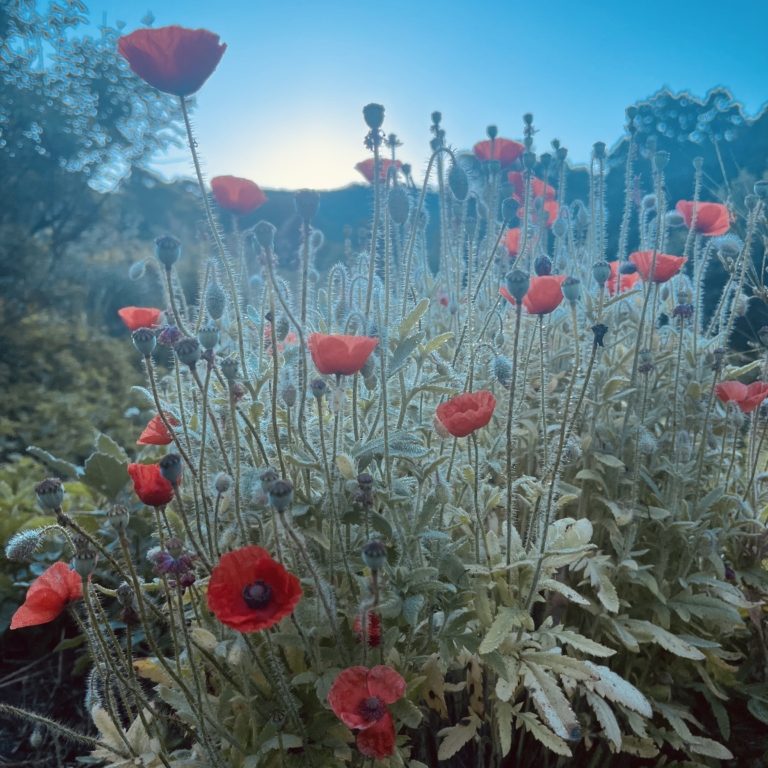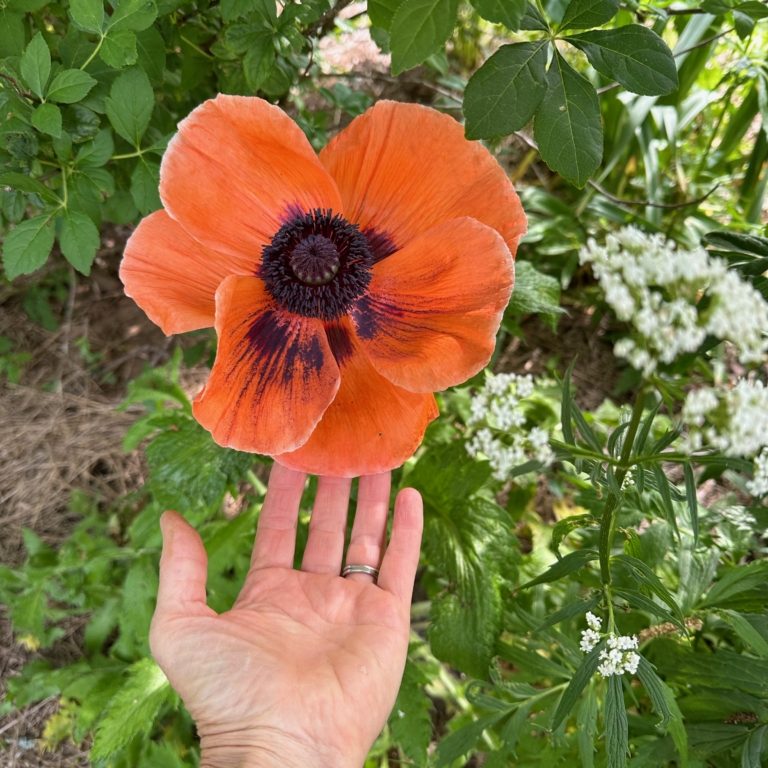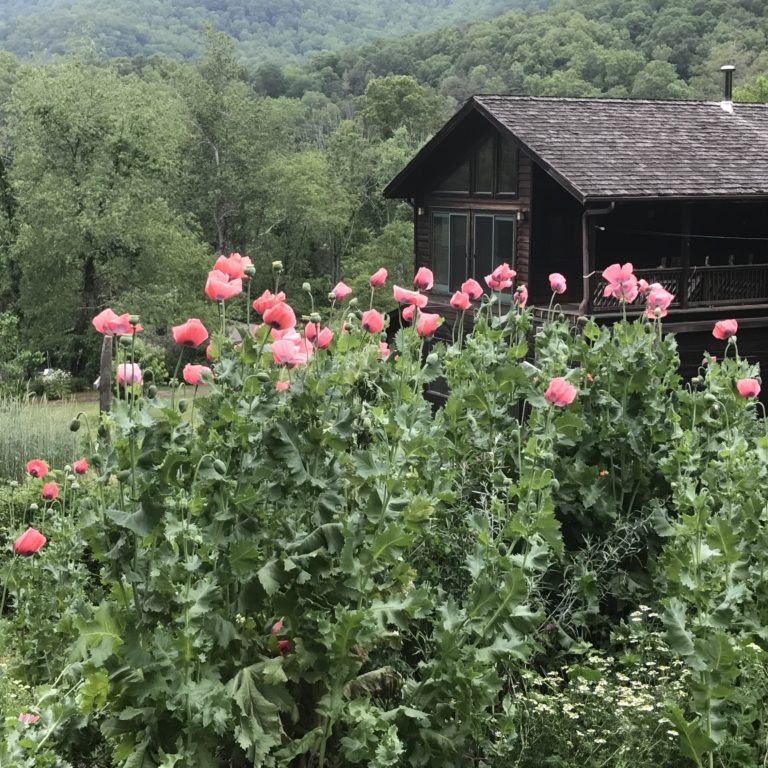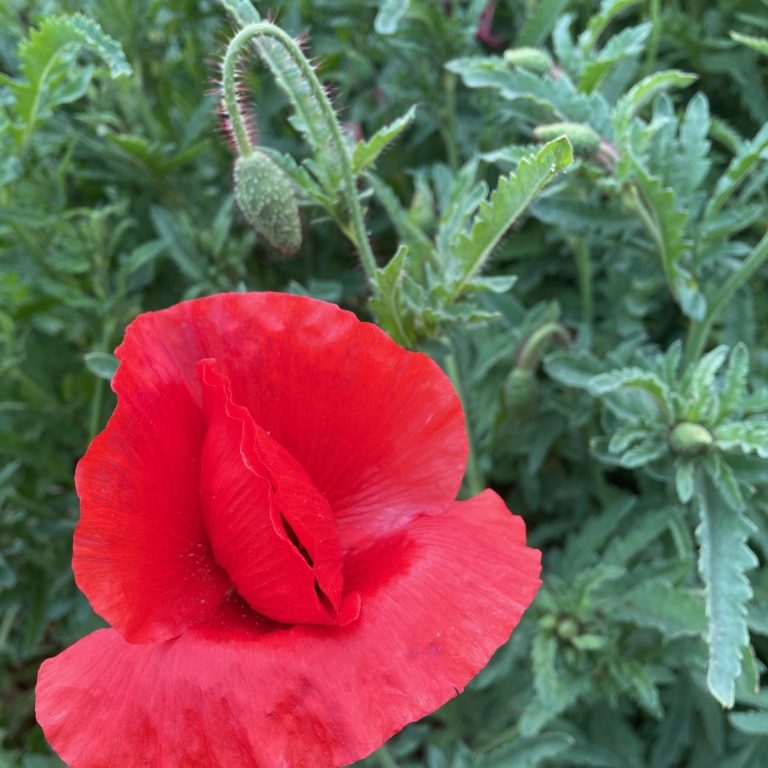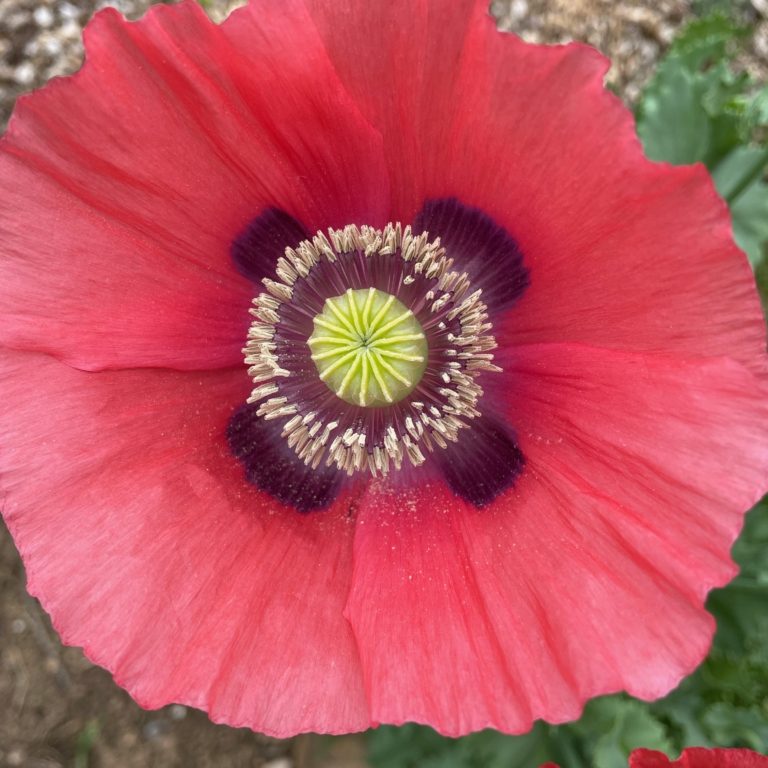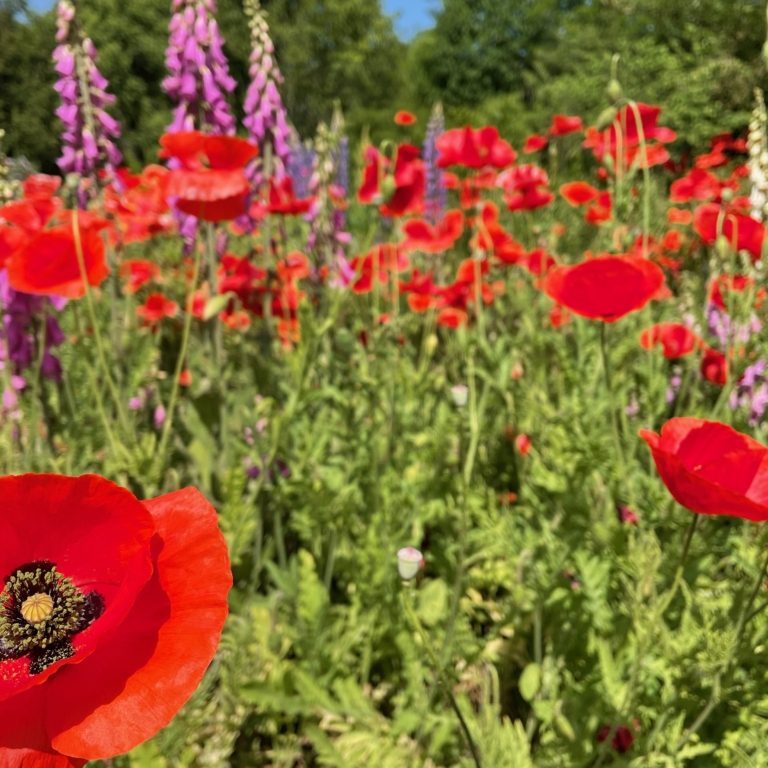Love Letter to Poppy
Poppy
Papaveracea
Dear Poppy,
Every February, I sprinkle some of your seeds in my garden as an early spring blessing. I know you need some cold to kiss your seeds before they can sprout, so I disregard the nonsensical label that says ‘sow after last frost.’ When we sow your seeds in fall flats and tend them through the winter, your germination rate is much higher!
Poppy, your flower teaches us about non-grasping or clinging to things. When I try to bring in your glorious field blooms and put them in a vase, your petals fall off before I can get the stems situated in the bouquet. Sometimes it’s better to appreciate things in their whole form and just let them be. It is said that you are the signature flower to help us find happiness within.
My favorite salad dressing recipe calls for your seeds as an ingredient. And Lemon Poppy Seed Muffins- who doesn’t love them? My saintly friend Terri, who was a school bus driver for years, once failed an annual drug test from eating too many of your muffins!
Books could be written (and have) about your powers, Papaver somniferum, Opium Poppy. My favorite one is called The Good Earth by Pearl S. Buck. A natural analgesic, you take away both mental and physical pain but leave in its absence an ache for you that can end up being worse than the pain ever was in the first place. People lose their lives over you, fight wars over you, build empires because of you. Poppy, you are a plant that makes history.
In the past couple hundred years, humans figured out how to isolate compounds of certain plants and amplify their gifts in a lab—Morphine being one of the first- your poppy baby. Your latin species name of somniferum means ‘sleep aid’ and if not careful, you can send us into a sleep with no awakening. The Royal College of Anaesthetists has you embedded on their coat of arms!
California Poppy, Eschscholzia californica, I see how you are the low key version of your somniferum cousin, giving us pain relief and freeing up energy while not being so addictive. I appreciate your ease with children. I like to grow both your varying genera side by side in my garden. You seem to come and go, though- moving around to different beds as you please. Really, I don’t have much control of where you will grow or if you will stay. So I feel very fortunate when I have you blooming at all, Poppy.
When I made the Glad Garden, your Papaver rhoeas species, Flanders Poppy, appeared as the first flower! I have no idea where your seed came from, but it was one of the sweetest surprises to have you just show up and baptize my new garden! Thank you, red poppy! Thank you for all the many colors and sizes and shapes your flowers take and the gorgeous seed heads you leave behind after the stunning floral show. A milky sap flows from these pods, another unique characteristic all of your family has.
Pretty soon your cousins Bloodroot and Celandine will bloom- and we will be on our way again to poppy days. Oriental, Corn, Iceland, Plume—your exquisite genera are beautiful to behold. I met your Yellow-Horned Sea Poppy first in Hart’s garden and then years later in the wild, on a beach in Sicily. The leaves are furry, not what you’d typically think of with your habit. Poppy, you are just full of variety and vigor! I look on with such favor and delight.
Love,
Mary Plantwalker

